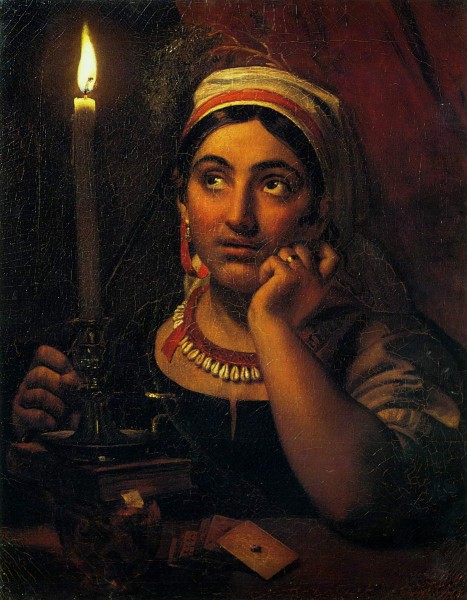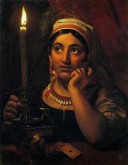Fortune-Teller with a Candle
1830
- Period Early 19th century
- CategoryPortrait
- Share
Fortune telling is an ancient tradition in Russia. It has long been the custom to tell fortunes on the eve of all important Orthodox holidays, throughout the entire year. The most propitious time for fortune telling, however, was believed to be yuletide and the summer solstice. Yuletide (svyatki) officially began on Christmas Eve and lasted until Epiphany (Twelfth Night). Those days lay at the junction of the old and the new years and were therefore times when people were particularly interested in learning of future events in their lives, such as the prospect of marriage, good health, prosperous business ventures and agricultural plenitude. It was popularly held that the forces of evil, whose presence was a crucial factor in ensuring the reliability of fortune telling, were especially powerful at the New Year. Play and Passion in Russian Fine Art. St-Petersburg. 1999. P. 120.
Kiprensky painted this picture in Naples by way of a preliminary study for the painting Sibilla Tiburtina, completed in the same year. In one of his letters, the artist wrote: "In order to learn about the colours and lighting produced by a naked flame, I first painted a fortune-teller". In another letter he refers to the painting A Young Gypsy Girl Reading Cards by Candlelight. The painting was acquired by Count Sheremetyev. Play and Passion in Russian Fine Art. St-Petersburg. 1999. P. 122.

